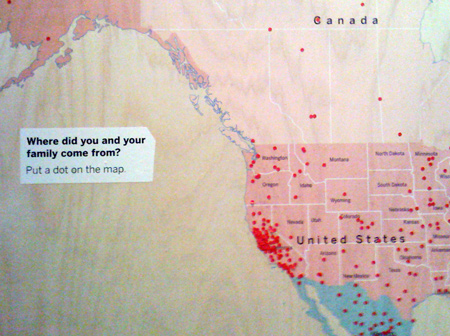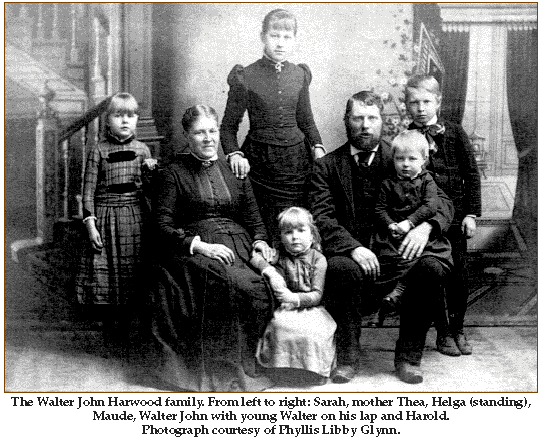Stories To Tell Books BLOG
Filtering by Category: Family History Research and Preservation
A Rosetta Stone for Cursive
Biff Barnes
A Visit to the World Your Ancestors Lived In
Biff Barnes
Are You A Good Listener?
Biff Barnes
Family History: “Our Challenge to Pass It On”
Biff Barnes
The Ethical Will: Memoirs That Share Your Morals and Values
Biff Barnes
Family History and the Race for Mayor of San Francisco
Biff Barnes
Publishing Journals and Letters with Bruce Bothwell
Nan Barnes
National Women's History Museum - Resource for Family Historians
Biff Barnes
See You at the Midwest Family History Expo
Biff Barnes
Family History Books: Using Literary Techniques to Tell Stories
Biff Barnes
See You at The Colorado Family History Expo
Biff Barnes
The National Jukebox: Family Historians Should Give It a Listen
Biff Barnes
A Rosetta Stone for Cursive?
Biff Barnes
The Photo Detective
Biff Barnes
Why I Celebrate National Library Week
Biff Barnes
A Chasm for Family History Writers
Biff Barnes
Crowdsourced mapping
Nan Barnes
I’m still reflecting on my recent trip to the Oakland Museum, and how we can apply the methods used by these curators of culture in our own learning. In my last post on the subject, I talked about their interactive timeline.
The interactive map below is another example of using the information provided by a large group. How simple – a map, and stickers. In this case, the question is, “Where did your family come from?” Yet there are other questions you might ask, such as where have you traveled to, or where did your ancestors live in the 1600’s – each of which would produce wildly different data. You can do this - anyone can.

The graphic doesn’t have to be a map, either. Like the timeline I discussed earlier, these are just representations of the scope of the question we’re asking. If we want to know about places, maps are good. Time? You get it. The key is the ease with which people can give their answer. That’s what is clever here – a sticker, or a post it note is very user friendly. And the internet has made this kind of data collection even easier.
I first fell in love with the idea of crowdsourcing when Wikipedia appeared ten years ago. It seems the ideal way to tap into the knowledge of the masses. Crowdsourcing is controversial - in this Wikipedia article about crowdsourcing, I just discovered that Wikipedia founder Jimmy Wales objects to the term. It has a negative connotation of taking advantage of free labor. (If you have a moment, check out the article’s list of terms related to crowdsourcing, including citizen science, collective intelligence, and a new one to me – dotmocracy.
So this most commonly used term, crowdsourcing, is a misnomer. Instead, the admirable model used at the museum would be called mass collaboration, or mass cooperation. That’s what’s happening on Wikipedia, and in different iterations it’s happening everywhere else, too. I always read the user reviews on amazon.com before I buy, and I’m careful to check that the majority rated the book highly. Don’t you? I filter my Yelp! searches so that I only need to consider 4-star restaurants. My favorite use of crowdsourcing (sorry, the term is imprecise, but you know what I mean) is the excellent user reviews on newegg.com, without which I could not navigate the world of technology.
The thing that ties these examples together is the absence of “experts”. It assumes that all of us have useful knowledge to share. The charm of crowdsourcing is that no one can force people to contribute; and yet people do, willingly. We are happy to help, happy to give what knowledge we have, especially when it’s a subject we care about.
The interactive map in the museum is just the tip of the iceberg – a literal, hands-on sign that people are willing to contribute. If you want to frame a question, any question, posting it to an well-chosen internet bulletin board will gather results from masses of distant strangers – and isn’t that something to bolster your faith in humanity?
A Visit to the World Your Ancestors Lived In
Biff Barnes
What was it like to live in Great Grand Dad’s day? That’s a question any family historian trying to bring his ancestors to life in the pages of a book ought to ask.
Getting beyond the rather cold facts of a relative’s genealogical record requires drawing upon family stories when they are available. But it also means trying to recreate the time and place in which that person lived, their historical context. That’s the realm of the social historian.

The City University of New York has placed the work of its American Social History Project a mouse click away. The website is maintained by the University’s Center for Media and Learning. “Informed by the latest scholarship,” promises the Project, “we make the past, and the lives of the working people and ‘ordinary’ Americans who shaped it, vivid and meaningful.” The website “presents history from the perspective of working men and women, pairing a lively narrative with extensive visual and written documentary evidence.”
It’s a wonderful resource for a family historian.
There are a variety of windows into the past. Three I found of particular interest were:
- Who Built America? From the Great War of 1914 to the Dawn of the Atomic Age in 1946 is a multimedia exploration of three of the most tumultuous decades in U.S. history. Spanning two world wars and the Great Depression, this CD-ROM presents a comprehensive and engaging overview of the history of the period along with an extraordinarily rich body of primary sources: dozens of oral interviews, period songs, speeches, radio programs and film clips, hundreds of illustrations, and thousands of pages of primary text documents.

- The Lost Museum: Exploring Antebellum American Life and Culture “a three-dimensional re-creation of P. T. Barnum’s American Museum, the most visited cultural attraction in the nineteenth-century United States.”
- The September 11Digital Archive “contains more than 150,000 digital items, including more than 40,000 emails and other electronic communications, more than 40,000 first-hand stories, and more than 15,000 digital images.” (I know, Great Grand Dad wasn’t around then, I just liked the archive.)
The American Social History Project offers several other multimedia resources and much more including podcasts, blogs, and documentary films. Check it out! Not only will it help you add colorful context to your family history book, it’s just fun to surf.
Let us know what you think! Leave a comment.
Identifying People in Old Family Photographs
Biff Barnes
Are you a mystery fan? I am. I love to watch detectives on the trail of clues, unraveling the past before my eyes.
Old family photos can offer the mystery-lovers among us a chance to become the detective. We’ve all got at least a few of those family photos that are interesting and probably important, but they feature people we simply can’t identify. It’s frustrating, but don’t throw the photos back into a box and bury them back in the garage. Here are some tools to help you discover your mysterious ancestors.
Kimberly Powell on About.com offers 5 Steps for Identifying People in Old Family Photographs. Her suggestions:
- Identify the Type of Photograph – Daguerreotypes were popular from 1839-1870, Cabinet Cards from 1866-1906, and no Polaroid photo could have been taken before 1948 (when the Polaroid camera was invented).
- Who Was the Photographer? – Check the front, back and frame or cover of the photo for the photographer’s name and possibly location. Local city directories, libraries, and historical or genealogical societies can help you track when the photographer was in business.
- Check Out the Scene or Setting – Clues to the time or location may appear when the family is posed in front of the family automobile or home. The Family Chronicles site on Dating Old Photographs suggests that it is often possible to establish the date by carefully comparing with other pictures of known date. For example, note details in the painted canvas background used for a studio shot. The drapes or woodwork in the scene may be clues to the photo’s date.

Visit Family Chronicles Dating Old Photographs to see how to date this photo.
- Focus on Clothing or Hairstyle – The Costume Detective website helps you to analyze costumes, fashion, hats, and jewelry to achieve a date within five years of the date the photo was taken. The Costumer’s Manifesto site offers numerous links for dating old family photographs, using fashion history and styles of photo-mounts. It promises, “These links are provided so you can teach yourself to do this for yourself.”
 Visit The Costume Detective to see how to date this photo.
Visit The Costume Detective to see how to date this photo.
- Match Up the Clues with Your Knowledge of Family History – Once you’ve identified the time and place of the photo, use your knowledge of ancestors to begin trying to identify who is in the picture.
Click here to read Kimberly Powell’s 5 Steps for Identifying People in Old Family Photographs
Click here to visit Family Chronicle’s Dating Old Photographs
Click here to visit the Costume Detective
Click here visit the Costumer’s Manifesto